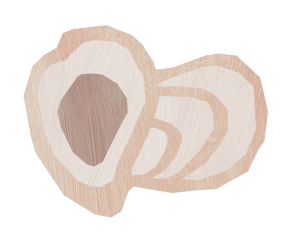Dive into a world of tantalizing taste and oceanic delights when you try a Bluff Oyster!

These little ocean gems, harvested from the pristine waters of New Zealand, pack a powerful punch of flavour that will make your taste buds sing. With their smooth texture and briny sweetness, Bluff Oysters are a seafood lover's dream come true.
Bluff oysters are reputed to be the best in the world and New Zealand’s national treasure. These delicate and succulent shellfish are dredged along the coastlines of Southland between March and August every year.
Originating in the pristine, cool waters of the Foveaux Strait, one of the few natural oyster beds in the world, Bluff oysters are known for their unique flavour that is loved around the globe.
Peak season: 1st March - May
Flavours: Sweet, briny, and silky smooth, and served raw with a squeeze of lemon, battered and fried, or straight from the shell at the Bluff Oyster Festival, they’re the taste of Southland distilled.
Bluff oysters don’t need a further introduction — they’re a rite of passage when coming south.
History
The Foveaux Strait is one of the oldest commercial fisheries in New Zealand, and the iconic Bluff oyster has been harvested here for over 100 years. Oystering has helped shape Bluff, one of New Zealand’s oldest towns, where the coastal town features cues to its dredging past and culture. The industry contributes significantly to the local economy and to ensure its sustainability a quota system was introduced in the 1960s, along with limited season which helps protects the oyster beds for future generations.
Bluff Oyster and Food Festival
Bluff Oysters are celebrated in style every May, with the Bluff Oyster and Food Festival. The event draws visitors from around the globe. Thousands of world-famous Bluff oysters and other gourmet ocean treats are served fresh and washed down with local brews. Crowds are entertained with oyster eating and opening competitions, and local designers get creative on the boardwalk with designs incorporating the delicacy.
About the Oyster
Although commonly known as the Bluff oyster, it is known by other names, including mud oyster, flat oyster, dredge oyster, Foveaux Strait oyster and deep-water oyster. It's known in te reo as the Tio Paruparu, and its scientific name is: Tiostrea chilensis.
This type of oyster is native to New Zealand and found throughout the country but is most common in the south. They can be found around the coast and form dense beds in gravel or coarse sand bottoms 25 to 50 metres deep.
The shell of the oyster comes in a variety of colours ranging from white to purple-brown. The left shell is ridged and cupped, while the right shell lies flat and has scaly layers. Inside, the shell is luminous, and the flesh has shades of white, grey, gold, and black.
Oyster Facts
- Oysters can live up to eight years
- The oysters we eat are about four to six years old
- Oysters can alternate between each sex
- Oysters are pear-shaped with a heavy-shelled bivalve
- They can be 6-10 centimetres long
- Around 10 million oysters are pulled from Foveaux Strait a season (quota dependent)
- Oysters are a great source of zinc, iron, selenium, vitamin B12, vitamin A, copper, vitamin C
- Only about two dozen ships can trawl oysters in the Foveaux Strait legally.
Eating Oysters
Bluff oysters are meatier and have a more intense flavour than their cousins around New Zealand. They are arguably best eaten fresh, raw and straight from the shell, but are also delicious battered, served Kilpatrick or in a seafood chowder.
Where to Buy
During Bluff Oyster season there are many places around Murihiku Southland where you can buy these local delicacies, such as Fowlers Oysters, Barnes' Oysters, Oyster Cove and Hayz at the Anchorage.











